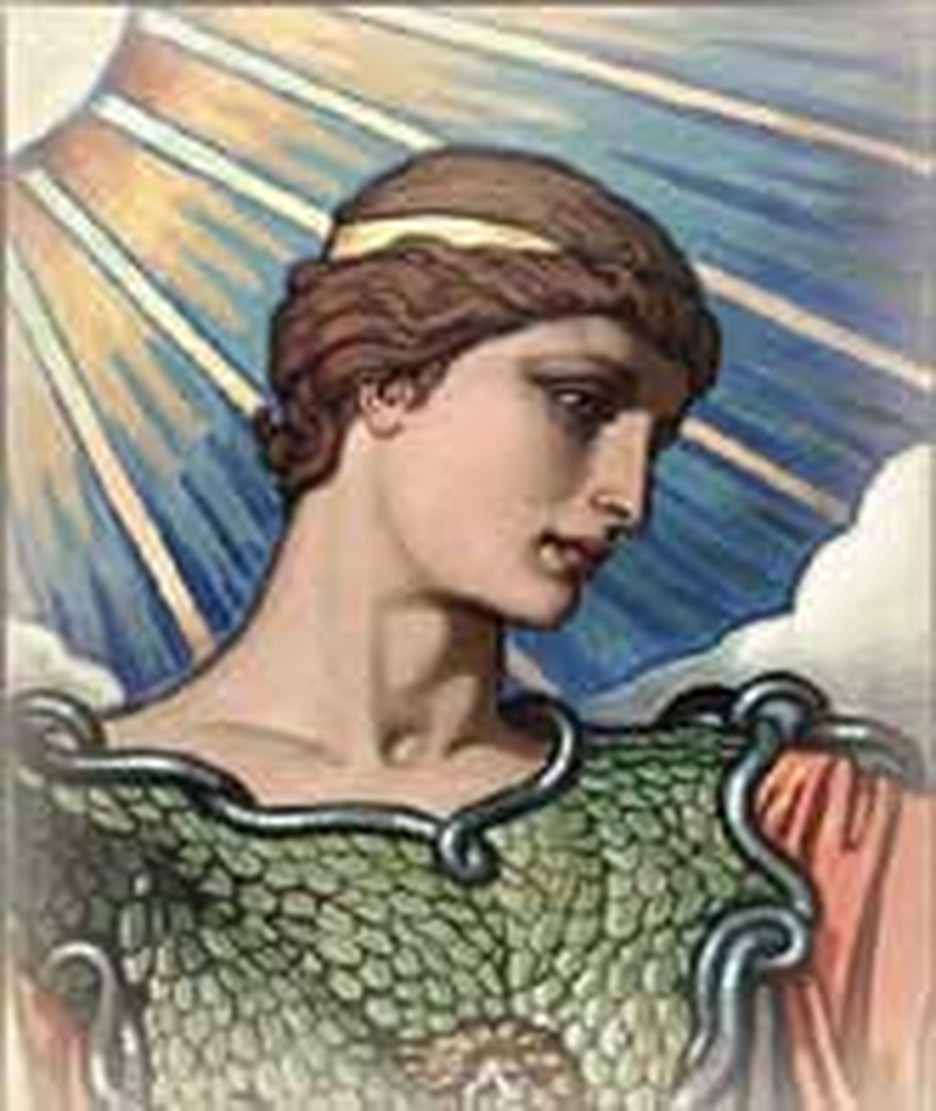
Chrysanthus felt something new stirring in his heart. A wealthy young man, educated in the arts and sciences of third century Rome, he had stumbled across Christian writings and scriptures. These made more sense to him than his previous studies. He converted to Christianity and looked for someone to teach him more. A hermit named Carpophorus instructed him more fully in the faith and baptized him in the name of the Father, the Son and the Holy Spirit.
His commitment to Christianity would be the death of Chrysanthus. So the legend says, and it is one of the most beautiful to come down to us.
Chrysanthus' father, Polemius, was a high-ranking soldier. He despised cowardice and Christianity. How could a crucified man be God? He demanded that Chrysanthus return to the old gods. When his son respectfully refused, Polemius locked him into a cellar on short rations for many days. Chrysanthus only grew stronger in his determination to follow Christ.
Polemius did not know what to do. A friend of the family counseled him to lure Chrysanthus back to idolatry through pleasure. The suggestion made sense to Polemius. He fitted out a room with luxurious drapes and decorations, prepared a feast and wine for his hungry son and hired sexy girls to whisper sweet suggestions in his ears. Chrysanthus was brought up from his dark hole.
At once he realized that this was a trap set for his soul. Strengthening himself with prayer, he resisted the lures spread before him. Once again Polemius realized he was defeated. He went back to the drawing board to devise another plan.
An old man told Polemius about Daria. This girl was a beautiful virgin, dedicated to the goddess Minerva. She was known not only for her beauty but for her intelligence. Arrange a marriage between Daria and Chrysanthus and this girl would reason him out of his folly, suggested the old man.
Polemius hurried to the temple and interviewed the girl. She was everything that he had been told. Polemius pleaded with the girl to become engaged to his son and bring him back to his senses. At first she could not believe the man was sincere, for she was of humble birth, but the tears in his eyes finally convinced her this was no trick.
Dressing herself for the occasion, she accompanied her prospective father-in-law to his home. Chrysanthus accepted her graciously, listened to her arguments and showed her their weaknesses. How could she worship gods of stone and wood and gold? he asked. The temples even had to have watch dogs to protect their treasures from being stolen. Not only this, but the stories showed that every god and goddess was guilty of deep sin.
Daria told him he was being silly. All thinkers knew that the stories were just fables and the images were just to help the ignorant masses focus their minds on the gods. The real gods were wind and rain and fire and the like. Chrysanthus asked why the real gods would let their glory go to images. The "gods" of wind, rain and fire were all around us and could be worshipped directly. No, he said, there is one true God who made all these things through Jesus Christ and who should be worshipped.
In the end, it was Daria who was convinced. The two entered a Christian marriage in which each dedicated themselves to winning souls for Christ. Pagans stoned them in a sand pit near the catacombs (and later martyred other Christians at the same spot).
There really were a Chrysanthus and Daria and their martyrdom is celebrated on this day, October 25, in the Roman calendar. Their bones and a silver chalice with which Christians celebrated the Eucharist at their grave site was found buried along the New Salarian Way outside Rome. But as to the rest of the story, it cannot be confirmed.
Bibliography:
- Since the fourth century, Chrysanthus and Daria have been included in Roman martyr lists.
- Kirsch, J. P. "Sts. Chrysanthus and Daria" in the Catholic Encyclopedia.
- Reilly, A. J. The Martyrs of the Catacombs Tan Book Publishers, Inc. 1987.
Last updated June, 2007.







